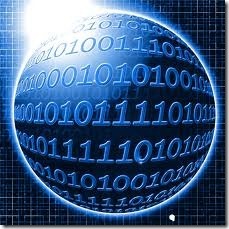A BIT ABOUT THE BIT
The computer’s seemingly endless potential is, in fact, based on only two electronic stares-on and off . The physical characteristics of the computer make it possible to combine these two electronic states to represent letters, numbers, and even colors. An "on" or "off" electronic state is represented by a bit. ( Bit is short for binary digit ) . The presence or absence of a bit is referred to as on-bit and off-bit, respectively. In the binary numbering system ( base 2 ) and in written text, the on-bit is a 1 and the off-bit is a 0 .
The vacuum tubes, transistors, and integrated circuits (see topic Image Bank, "An Abbreviated History of Computers") that characterize the generations of computers all enable them to distinguish between on and off and, therefore, to use binary logic.
Physically, these states are achieved in a variety of ways. In primary storage the two electronic states arc represented by the direction of current flow. Another approach is to turn the circuit itself on or off. In secondary storage the two states are made possible by the magnetic arrangement of the surface coating on magnetic tapes and disks "Data Storage and Organization").
Bits may be fine for computers, but human beings are more comfortable with letters, decimal numbers (the base-to numerals 0 through 9), and colors. Therefore, the letters, decimal numbers, and colors that we input to a computer system while doing word processing, graphics, and other applications must be translated into Is and Os for processing and storage. The computer translates the bits back into letters, decimal numbers. and colors for output on monitors, printers, and so on. This translation is performed so we can recognize and understand the output It is made possible by encoding systems.

